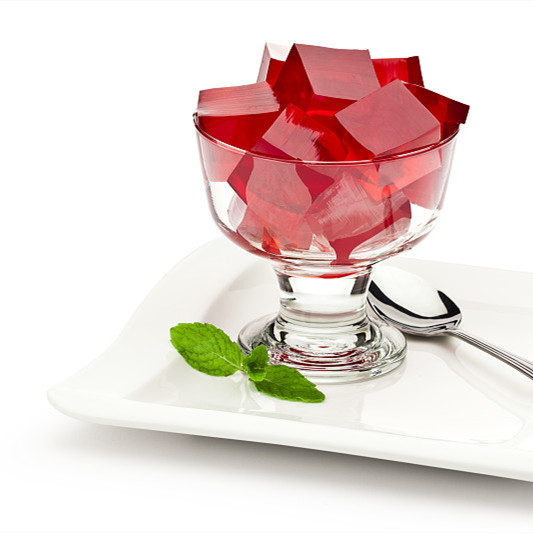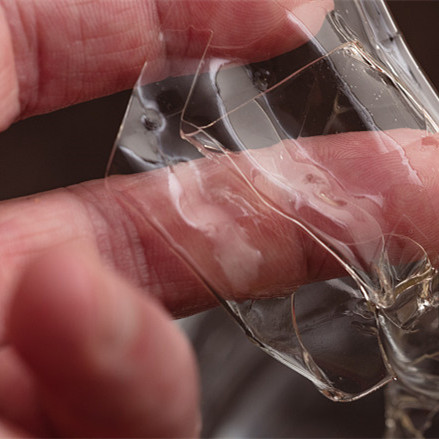Summer is coming, cold drinks are selling well in the domestic market, and the application of colloids in yogurt is also in strong demand. Stabilizers are usually added to yogurt. The commonly used colloidal stabilizers include sodium carboxymethylcellulose CMC-Na, gelatin, pectin and agar, etc., and the amount added is generally controlled at 0.1% to 0.5%. Due to space constraints, the Food Additives and Ingredients Research Group of East China University of Science and Technology will focus on the first two.
1. Sodium Carboxymethylcellulose (CMC-Na)
The use of stabilizers in yogurt products is mainly to increase the viscosity of yogurt and improve its texture, state and taste. The application of carboxymethylcellulose sodium CMC-Na in set yogurt can prevent whey precipitation of the finished product during the shelf life And improve the structure of yogurt.
Casein molecules undergoing Brownian motion in water due to the action of gravity, coupled with the repulsion of charged particles, and the lactic acid generated by the action of lactic acid bacteria, when the pH in milk is close to the isoelectric point of casein, if the charge is lost, it will Precipitation occurs to form a so-called gel, but if the gel is broken under stirring, a suspension of casein will be obtained, and if it is still, it will gather again and precipitate. At this time, if carboxymethylcellulose sodium CMC-Na is added, the viscosity of the solution will not be increased, and the hydrophilic groups on the surface of casein particles will combine with carboxymethylcellulose sodium CMC-Na to form a surface film, forming a stable suspension , Experiments have proved that adding ten times the water and standing still will not produce precipitation. However, the thermal stability of general stabilizers is poor. If the above-mentioned colloid is heated, the casein particles will gather and solidify again due to the destruction of the surface film. At this time, there is no hydrophilicity in the thermally coagulated casein particles. Will not redisperse in water.
Carboxymethylcellulose sodium CMC-Na is generally used as a stabilizer for yogurt now. Because carboxymethylcellulose sodium CMC-Na is negatively charged and has good thermal stability, it is compatible with yogurt at pH 4~5. The protein bases in the solution combine to form a dispersion that coagulates without precipitation at acidic pH. The pH value is related to the type of protein and the properties of CMC-Na, and it is roughly between 4.6 and 5.5.
According to Stokes' law, the sedimentation velocity of particles in beverages is proportional to the difference between the square of the particle diameter and the density of the particles, and inversely proportional to the viscosity of the liquid. The smaller the settling velocity, the greater the dynamic stability of the suspension. The use of high-viscosity carboxymethylcellulose sodium CMC-Na products can not only reduce the density difference between protein particles and feed liquid, but also increase the viscosity of feed liquid, so as to achieve the effect of stabilizing the system. However, high viscosity will bring bad mouthfeel to the beverage, and make it difficult for various local flavors of the beverage to be well developed. Domestic enterprises such as Chongqing Leehom Co., Ltd. have developed and produced related products in response to the above contradictions and customer needs. The biggest features of this type of product are low viscosity, high degree of substitution, and good uniformity of substitution. Therefore, the product has acid resistance, salt resistance, and suspension stability. Prominent.
Carboxymethylcellulose sodium CMC-Na has a great influence on the stability of yoghurt, which not only depends on the average degree of substitution and polymerization of carboxymethylcellulose sodium CMC-Na (apparently that is carboxymethylcellulose sodium CMC -The viscosity of Na solution) is suitable for yogurt, and the distribution of carboxymethyl groups of sodium carboxymethylcellulose CMC-Na on a single molecule of anhydrous glucose (substitution uniformity) and the distribution of anhydrous glucose molecules distribution difference between them.



2. Gelatin
Gelatin can be used in different types of yogurt, most prominently as a stabilizer. Gelatin allows low-fat yogurts to achieve a texture similar to high-cream yogurts, improving consumer acceptability.
In yogurt products, gelatin molecules function to form a weak gel network that prevents whey from seeping and separating. Whey precipitation of dairy products is caused by the separation of whey proteins, which usually occurs during the pasteurization stage and storage of the final product. The contraction of the casein in milk creates tension, which results in the protein and solids appearing to be "squeezed out". Gelatin molecules can prevent the whey from separating out through the formation of hydrogen bonds, so that the casein can avoid shrinkage, thus preventing the separation of the solid phase from the liquid phase.
High-strength gelatin provides a more stable structure than low-strength gelatin, so better stabilization is obtained. The long-chain structure of high-strength gelatin provides more bonding possibilities between milk protein and gelatin molecules. Therefore, high-strength gelatin can completely prevent whey from separating out. Higher doses are required to achieve the same effect if lower strength gelatin is used, but this is not sufficient to guarantee shelf life during storage and distribution. The stabilizing ability and high melting point of high-strength gelatin allow it to be used alone in yogurt products.